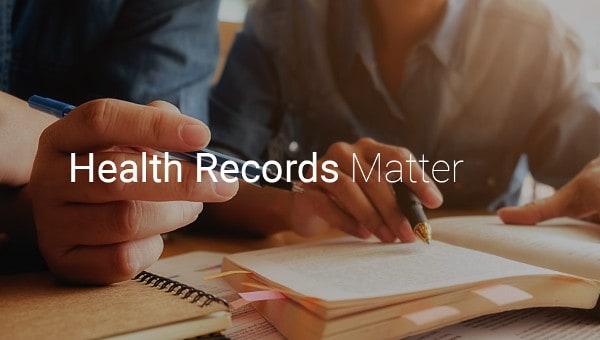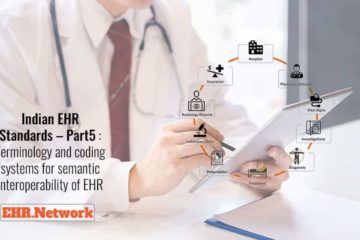Electronic Health Record – a beginner’s guide to making it happen.

Electronic Health Record or EHR, given it’s large and ever growing scope, has been defined in so many different ways. One of the simplest of them comes from HealthIT.gov
An electronic health record (EHR) is a digital version of a patient’s paper chart. EHRs are real-time, patient-centered records that make information available instantly and securely to authorized users. While an EHR does contain the medical and treatment histories of patients, an EHR system is built to go beyond standard clinical data collected in a provider’s office and can be inclusive of a broader view of a patient’s care.
A properly implemented EHR can bring great advantages to all the stake holders in a healthcare system including the provider, public health planners, healthcare researchers and more than all, the owner of the EHR. Some of the ways in which Electronic Health Records impact healthcare are..
- Availability of information improves transparency and builds trust between the stakeholders
- Shared information improves decision making and drives better care outcomes
- Eliminates redundancy and reduces overall cost of healthcare
- It supports the creation of technology driven tools that assist people in remaining healthy and prevent becoming sick
- Collective EHR of citizens allow better public health monitoring and policy making, thus improving overall health of communities
What constitutes an Electronic Health Record?
The last sentence in the above definition is the key to defining an EHR in it’s entire scope. An EHR is not a mere collection of clinical information in a a digital form. Primarily it has to be enable a broad view of a person’s health that can include data gathered by multiple systems.
In simple words, an Electronic Health Record is a digital version of your health history. Instead of storing the data on paper and retrieving it during medical consultations, an electronic health record offers you the convenience of having your health data digitally, often enabled by cloud technologies. Since it is available over a connected network, it becomes easy for clinics and doctors to retrieve your medical history and use it in proper diagnosis and providing healthcare.
A good EHR includes data such as the following:
- Radiology reports
- Laboratory data
- Immunizations
- Past individual medical history
- Vital Signs
- Medications
- Earlier Diagnosis
- Progress notes
- Demographics and more
To enable the exchange and proper reuse of data across healthcare systems, the data in an EHR should be interoperable. Technically we can achieve this by following a set of shared standards. The key aspects of these include using a common schema for the data and also coding them using a common terminology library.
The Pros of Electronic Health Record
Besides, improving care for the person, Electronic Health Record also helps healthcare providers streamline their workflows. They also fosters the evolution of more efficient processes including data-driven decision making, outcomes reporting, quality management and more.
While enabling the delivery of better diagnostic and care services to patients, electronic health records also allows for significantly reducing the occurrence of medical errors. With accurate and most recent data in hand, we can implement solutions that help practitioners reduce the scope for errors and misconceptions in diagnosis.
Besides, electronic health records also save significant time and expenses for patients by eliminating the need to scan or undergo tests again and preventing any delays in treatments. With a streamlined electronic health record in hand, you can ensure you receive systematic services regardless of which clinic or specialist doctor you intend to get diagnosed from. With the record, a GP can take up the role of a ‘family doctor’ by knowing your medical history and recent ailments, allowing him or her to offer better diagnosis.
What do we need to do to make EHR a reality in India
Making EHR a reality in India involves contribution from multiple sources. At the top level, the government has to publish the required policies, guidelines and standards. Technology and healthcare communities will have to follow this up and create common tool sets and industry initiatives that provide the core plumbing for building EHR solutions.
Finally the solutions that can be used by the end users will have to be created by technology companies ans adopted by all the stakeholders in healthcare.
Over the past few years, the Indian government has been very proactive in formalizing the policies and standards for the creation of a proper EHR. As of now we have all the required standards to create and manage EHRs consistently. These will continue to evolve and mature over the coming years. As a corollary to this medical and technology communities have been busy creating basic building blocks that can form the foundation of a solid EHR system. The most significant of these are
- openEHR – A framework to create and share artifacts that support gathering of EHR data consistently. These include a reference model for clinical information, community managed clinical models, high level query language, standards for task planning etc.
- SNOMED CT, ICD & LOINC – These are coding and classification terminologies that ensure consistent recording of clinical data in an EHR so that they are understood consistently across systems
- FHIR – The FHIR specification form HL7 defines a consistent REST interface for EHR systems to share information.
It is now up to the technology companies and healthtech startups to create EHR systems that the Indian healthcare ecosystem can use. This again is a large and complex problem, which needs an ecosystem approach to solve efficiently and cost effectively.
What has EHR.Network done to solve this problem?
We strongly believe in creating an ecosystem approach to solving the complex problem of EHR adoption. Given the complexity of building a good EHR systems, we need a vibrant healthcare application ecosystem where the participants create the best of breed applications on common data layer.
Towards this we have taken the responsibility for creating the secure data layer that can power a variety of health care applications, while ensuring that all of them remain standards compliant, interoperable and secure. Our EHR.Network includes a large number of building blocks that application developers can leverage to create and launch healthcare applications easily and at a marginal cost of building grounds up.
We host all these services on the cloud and expose REST APIs over the internet. The cohort of services that are currently available can support almost any type of applications. Further they are designed to be extensible to support any application specific workflows.
Apart from the core EHR as a platform service, we have also built frameworks for platformSDK/App server on Java and a web app UI in Angular 9. These are available free for application developers to speed up their development efforts.
If you are planning to develop a modern healthcare application, we invite you to explore EHR.network to make your journey fast and simple.
Learn more
- Explore case studies
- Read documentation
- Write to us
- Call us on +91 63609 97311



0 Comments